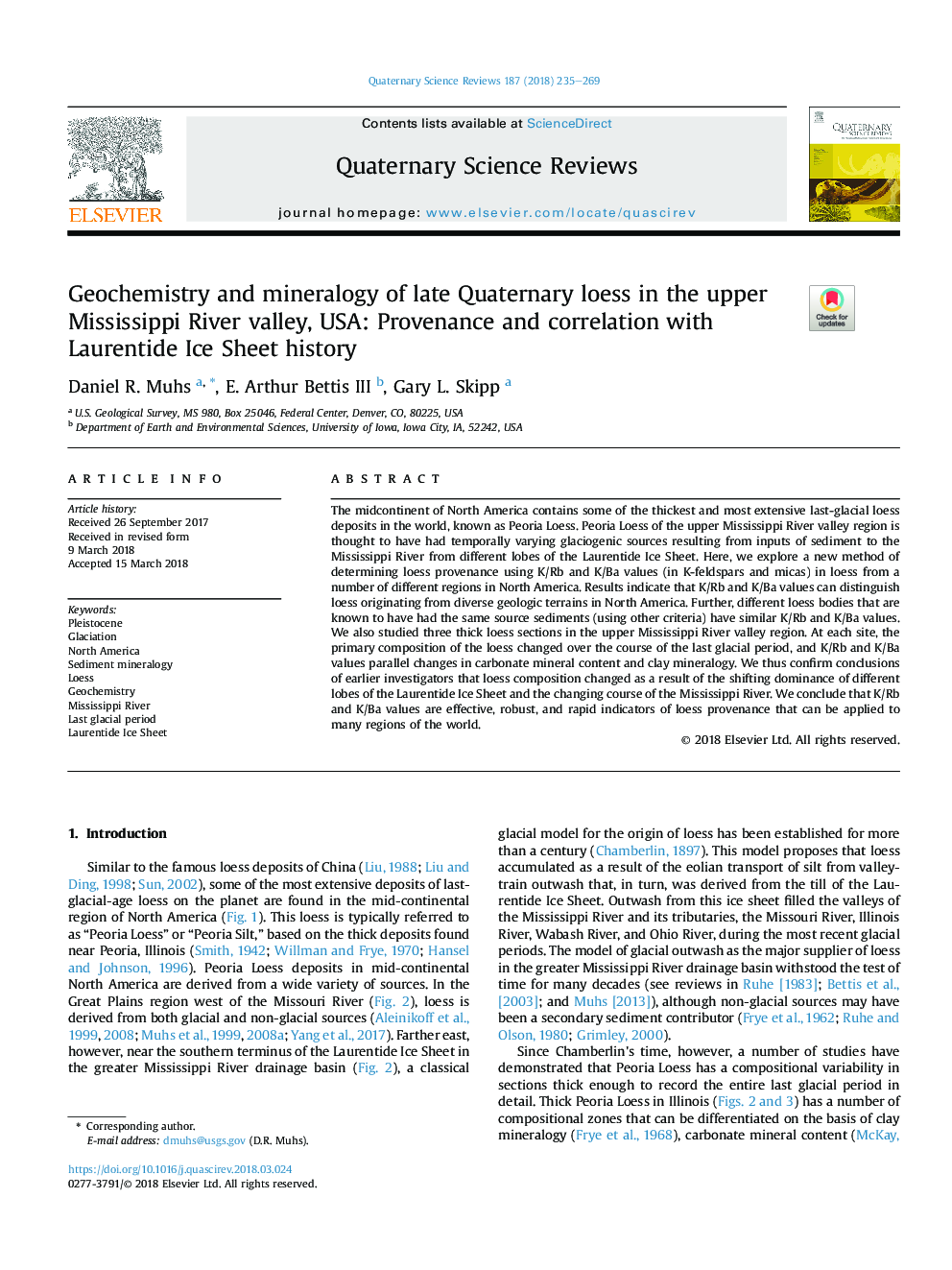| Article ID | Journal | Published Year | Pages | File Type |
|---|---|---|---|---|
| 8914871 | Quaternary Science Reviews | 2018 | 35 Pages |
Abstract
The midcontinent of North America contains some of the thickest and most extensive last-glacial loess deposits in the world, known as Peoria Loess. Peoria Loess of the upper Mississippi River valley region is thought to have had temporally varying glaciogenic sources resulting from inputs of sediment to the Mississippi River from different lobes of the Laurentide Ice Sheet. Here, we explore a new method of determining loess provenance using K/Rb and K/Ba values (in K-feldspars and micas) in loess from a number of different regions in North America. Results indicate that K/Rb and K/Ba values can distinguish loess originating from diverse geologic terrains in North America. Further, different loess bodies that are known to have had the same source sediments (using other criteria) have similar K/Rb and K/Ba values. We also studied three thick loess sections in the upper Mississippi River valley region. At each site, the primary composition of the loess changed over the course of the last glacial period, and K/Rb and K/Ba values parallel changes in carbonate mineral content and clay mineralogy. We thus confirm conclusions of earlier investigators that loess composition changed as a result of the shifting dominance of different lobes of the Laurentide Ice Sheet and the changing course of the Mississippi River. We conclude that K/Rb and K/Ba values are effective, robust, and rapid indicators of loess provenance that can be applied to many regions of the world.
Keywords
Related Topics
Physical Sciences and Engineering
Earth and Planetary Sciences
Geology
Authors
Daniel R. Muhs, E. Arthur III, Gary L. Skipp,
